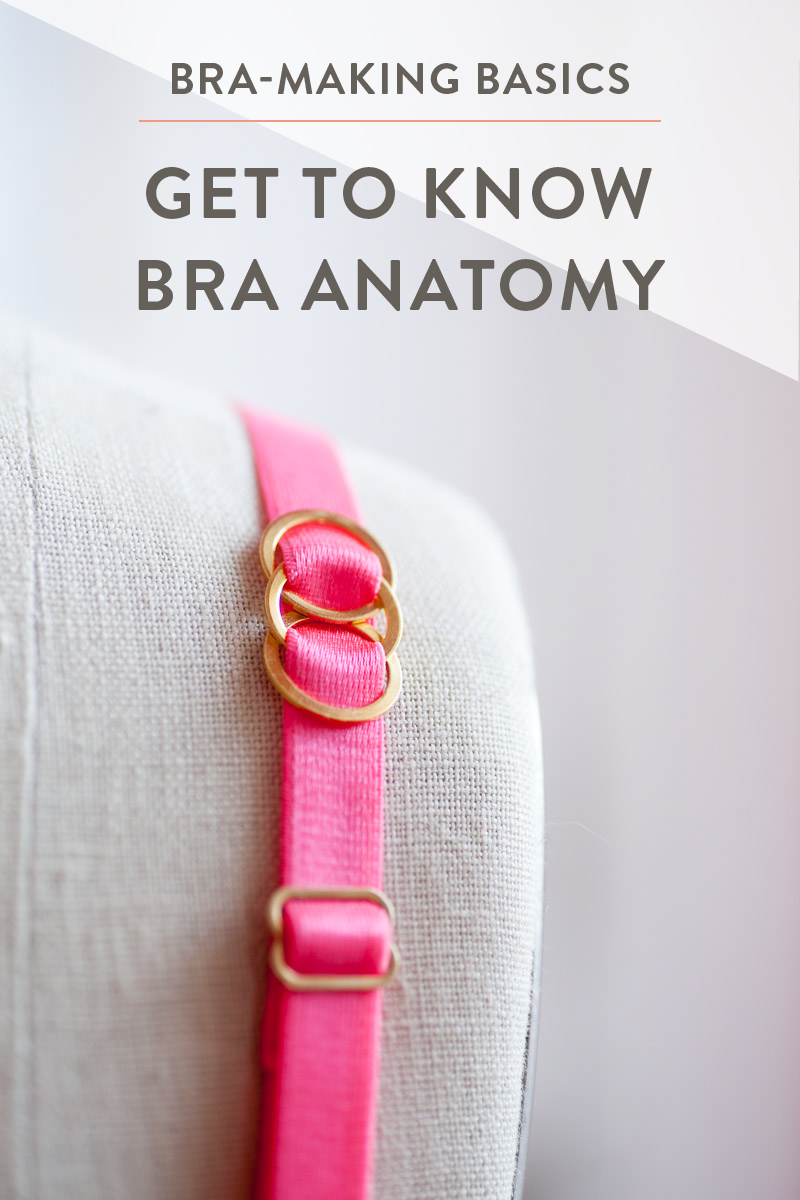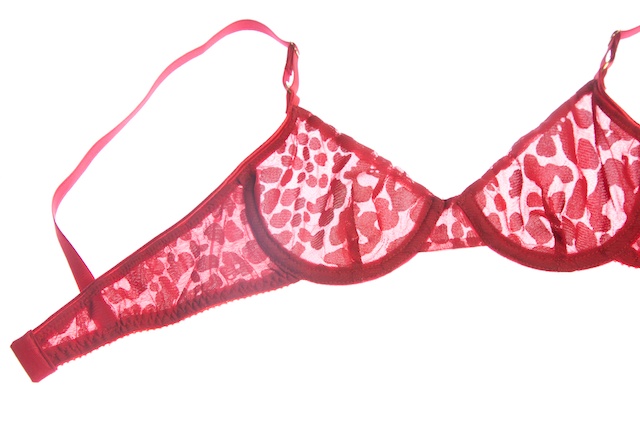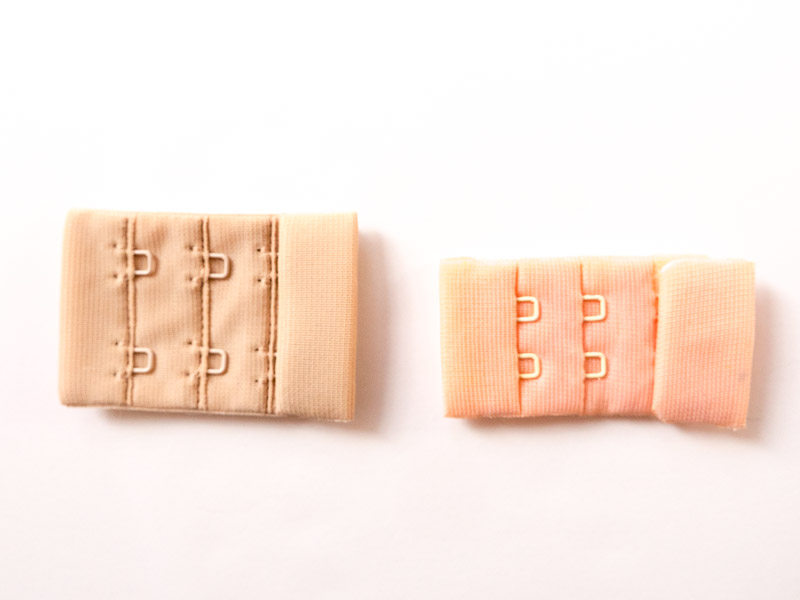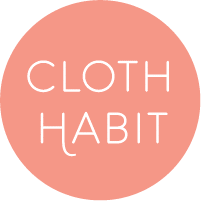
The first time you dip your toes into making a bra, the language of bra-making can be overwhelming. Bras and all their little parts use terms and fabrics home sewists don’t use in any other sewing. In addition, there are many styles of bras, each with its own aesthetics or suitability for your support needs.
I want to help you navigate this wonderful world of bra-making, and a great place to start is by getting familiar with some basic bra anatomy.
Surprisingly, basic bra construction and design has changed very little over the last 60 years. Silhouettes (the shape the cups and wires make) come and go, and materials have gotten more sophisticated, but the parts and construction methods have remained largely the same.

Let’s start with the obvious part–the cups!
Cups
Cups encase the breasts and create shape and silhouette. They may be seamed or seamless (or sometimes use a combination of both!). They can be soft and created from very thin, stretchy materials, or they can be extremely stiff from very rigid materials. As you can imagine, the firmer the material, the more a cup is able to create-and hold–a shape.

A cut-and-sew bra refers to any bra that uses a cup with seams. We are all familiar with seamless styles in the form of t-shirt bras, but I’m definitely a fan of seamed cups if I’m going to make my own. Seamed cups have great advantages over seamless cups in that:
- They are easier to adjust to fit the wearer. Small adjustments to the internal seams of a cup can make a big difference in fit.
- They create more possibilities in shape and silhouette.
- The seams themselves create structure, which in turn assists with lift, support and shape. This is true of any garment! Seams can keep garments from stretching out in areas they are prone to stretch, and cups certainly do stretch under all that pressure. For example, a bra with any kind of vertical seam in the bra keeps the cup from stretching downward.
Here is a great video that explains the importance of seams.*
Both of my bra patterns–the Watson and the Harriet–are examples of cut-and-sew cups. While being different cup shapes, they also have different purposes: the Watson is designed from light stretch materials, while the Harriet is designed for more rigid materials. Can you guess which one will have more control over shape and support?
The Frame

I use the terms “frame” and “cradle” interchangeably–you may see both terms in patterns and books. In a full-frame (or “full band”) bra, the frame or cradle is the front part of the bra into which the cups are sewn.
The frame can be all one piece, or it may be two pieces, with a seam underneath the cup. The section that runs in between the two cups is the bridge. Regardless of whether the bridge is a separate piece–with a seam under the cup–or part of a seamless cradle, it is very important to stabilize this area between the cups. In a good support bra, it should not stretch horizontally between the cups.
The Band
In a full-frame bra, the band is the back piece. It is made from stretchy material and attached to the side seam of the frame. This is what the band looks like in my Harriet bra:

A band (and its frame) can be narrow as it is in the above photo, or can be lengthened downward to create a longline bra, as in my Watson pattern.
The band does a huge job in keeping the cups from sagging downward and (if the cups fit properly) keeps the wires from creeping up on your breast tissue. I like to call the band “the great cantilever”. The looser a band fits, the less force it has in counteracting the weight of the breasts.
Frameless Bra
Unlike the full-frame bra, a frameless or “partial band” bra does not have a frame running underneath the cups. In this style of construction, a separate bridge piece joins the cups and a band piece is sewn directly to the cups.
Here is an example of a frameless bra:

In some patterns the band may be two pieces: a stable piece is sewn to the cup and joined by a side seam to a stretch band. In other patterns the band is one piece and cut from stretch material, as in my white bra above. (This way of doing it is more common in ready-to-wear.)
There is a third style of bra which is a bit of a unicorn combination between the two styles I have discussed–a full-frame bra but sewn much like the frameless bra, with the wires seam folding into the cup, instead of onto the frame. I’ll leave an explanation of this style for another article; the two styles I have discussed are the ones you’ll encounter more often in your bra-making!
The Straps
The main job of straps is to keep cups from falling down and arrange the top of the cup into position.
Straps don’t (or shouldn’t!) provide the main support of a bra–that’s the job of the frame and band. However, they can provide help with keeping the cups and breasts in place. For example, in some styles with cup pieces that extend into a fabric strap area, the “strap extension” can help in helping the breasts moving inward.

Straps can be made from all elastic, all fabric, or a bit of both. Fabric straps are, of course, stronger and last longer, but elastic straps are more comfortable, since they move with your body.
Adjustable straps allow a strap to be tightened over time as the elastic wears out (and it will!). Rings and sliders are the important component that create adjustable straps. In some bras, the rings are also used to attach the strap to an extension in the front or back of the bra.
Underwires
Now at last we come to underwires. Underwires are usually metal and are inserted into a soft casing sewn on top of the cup seams.
Love them or hate them, wires have an enormous impact on lift, support and the shape of a cup itself. This is simply because they are the strongest material in the bra! Fabric itself can do some work of shaping but underwires counteract the weight of breasts in a way fabric cannot do. When worn, a wire naturally splays or springs away from the arm with the force of the of the band. The lighter the wire, the more it will spring and the less it will hold its shape, and wires for full busts tend to be stronger to counteract this weight.
Of course, wireless bras have their place but they have much less potential to shape breasts or keep them in place. Wires (along with a firm band) help keep the bridge flat against the chest, which separates the breasts.
Hook & Eye

To finish off a bra, you need a hook and eye. Yes, there are bras that don’t have them–bras which you can pull over your head–but you can guess that if a band is stretchy or big enough to pull over your head the bra is not going to be the most supportive bra.
You can buy these either by the piece or as a large roll of tape that may be custom cut to size (I prefer the former as it is much neater looking).
Hook and eye pieces have from one up to 5 rows of hooks, but typically have only 3 columns. A bra should fit well and firmly on the loosest hook column; the tighter hooks allow you to tighten the bra as the elastics and fabric stretch with wear and age.
—
I could geek out on bra anatomy for ages but these are the parts you’ll see over and over again in your bra patterns. Don’t be afraid to jump in and try a pattern even if it doesn’t look like a bra you are used to wearing.
Happy bra-making!
*Video from the sadly now-closed Butterfly Collection (a full-bust bra shop in Canada), which was a great resource for full-bust fit tips and style opinions. Her videos are still on YouTube.
